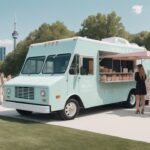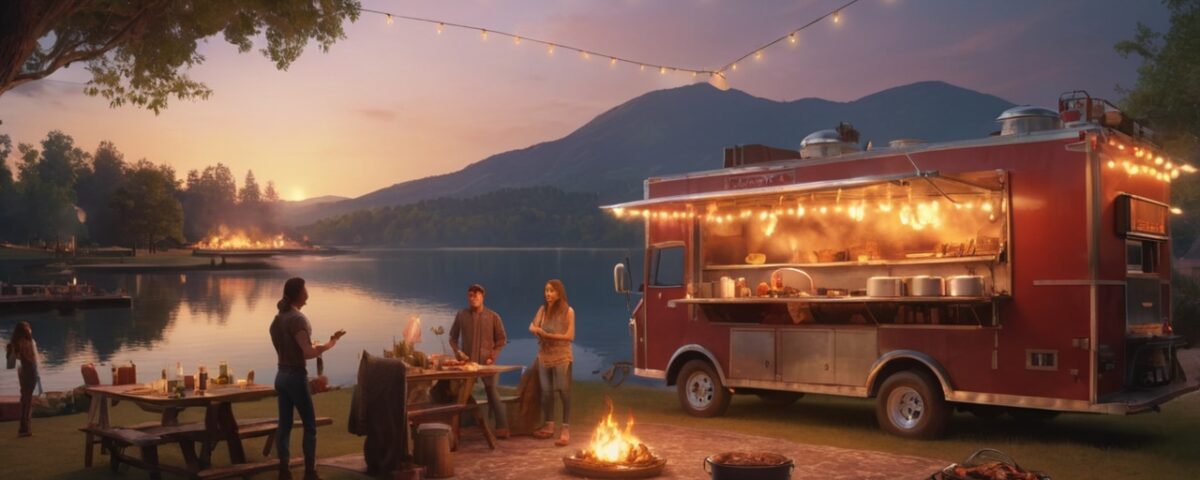
How to Rent the Perfect Food Truck for Your Next Event2025
October 25, 2025
Food Truck Catering in Toronto: Fun, Fast, and Full of Flavor
November 11, 2025
Fire Queen on the Move: Bringing Gourmet Dining Anywhere You Are
“I don’t want to serve food — I want to deliver an experience.” It may sound like a lofty ambition, but that’s precisely what Fire Queen has set out to do. Rather than confining gourmet to a fixed dining room, Fire Queen carries the kitchen, the smoke, and the sizzle to wherever you, your guests, or your event are located. In doing so, it’s helping redefine what “gourmet dining BBQ Catering Toronto ” means in a mobile world.
Introduction
In this article, you’ll discover how Fire Queen operates, what makes its mobile gourmet concept compelling, and how you can harness its power for your next event — whether it’s a wedding, corporate gathering, backyard celebration, or something entirely novel. We’ll explore logistics, menu design, guest experience, challenges, and real-world examples so that by the end, you’ll envision how Fire Queen (or a similar mobile gourmet concept BBQ Catering Toronto ) might become the culinary crown jewel of your next event.
The Allure of Gourmet on Wheels
Why a Static Fine-Dining Setting Sometimes Isn’t Enough
Picture a conventional banquet hall: elegant linens, soft lighting, servers in black and white, and tables dotted with plated courses. That setting still works — for many events, it’s reliable and safe. But in recent years, expectations shifted. People want more than food. They want stories. They want moments that seize the senses: the swirl of steam, the char on a grill, the immediacy of fresh-from-the-fire flavors.
Static venues limit you. Maybe the site lacks a commercial kitchen, or the travel costs to bring food in are prohibitive. Maybe you want to host in a forest clearing, lakeside dock, or rooftop terrace — places where “kitchen infrastructure” can feel like a burden. That is where mobile gourmet BBQ Catering Toronto shines: it turns constraints into stage design.
What “Fire Queen on the Move” Means
Fire Queen is, in essence, a mobile gourmet caterer. They specialize in mobile BBQ and wood pizza catering, among other elevated offerings. Their business model hinges on bringing the kitchen to the location, grilling (or cooking) on-site, and allowing guests to engage visually and olfactorily with the process. That way, the food is not just consumed — it’s attended, observed, celebrated.
Beyond novelty, this approach offers several advantages: freshness and flavor (food finishes on-site), theatrical appeal (the truck becomes a centerpiece), flexibility of venue (remote locations become viable), customization and engagement (menus adjusted on the fly), and branding (a moving, branded unit acts as live marketing). However, it also raises questions about logistics, consistency, and trade-offs. We’ll address all of these.
Designing the Experience: Menu, Service Style & Guest Flow
Crafting a Menu That Travels
Not every dish can be moved. Fire Queen’s approach balances ambition with feasibility. A few guiding principles: choose robust components; reuse shared elements; limit proteins to avoid complexity; finish dishes on-site to preserve flavor; and consider hand-held or small-plate formats for ease of service. Dual offerings like pizza and BBQ allow variety without overburdening single-station workflows.
Service Styles & Guest Journey
How guests receive food influences perception and wait times. Options include ordering at the window, buffet-style staging, staff-served portions, or staggered/wave service. Each affects guest mobility and staffing. A successful flow includes passed appetizers, visible cooking, and a clear path to seating; the food becomes part of the event’s choreography rather than an afterthought.
Atmosphere & Branding
The aesthetic matters. Fire Queen leverages vehicle wrap, lighting, signage, and layout to reinforce quality. The mobile unit should look and feel like a restaurant on wheels, not a cramped kitchen. Visual cues—string lights, smoke, visible cooking—create moments that guests photograph and share, extending the event’s reach beyond attendees.
The Logistical Ballet: What Goes on Behind the Scenes
Site Assessment & Setup
Before the event, a vendor must evaluate access, utilities, ground stability, permits, staging layout, and backup routes. Photos and measurements are typically requested in advance so that modular platforms, ramps, or generators can be planned. Attention to these details prevents day‑of scrambling and preserves the guest experience.
Timing & Schedule
Timing is crucial. Typical schedules include early arrival for positioning, a prep window for mise en place, heat-up and testing, service windows, and a buffer for last-minute items. Breakdowns and cleanup also require time; a well-planned timeline reduces stress and prevents rushed service that undermines quality.
Staffing & Safety
Skilled staff are non‑negotiable. Mobile gourmet requires trained chefs, line cooks, servers, and cleanup crew. Safety certifications, fire suppression systems, liability insurance, and first-aid readiness are essential. When choosing a vendor, request proof of these credentials; reputable companies will provide them without hesitation.
Real-World Example: Fire Queen in Action
Here’s a practical scenario inspired by the type of events Fire Queen markets and can execute.
Event: Lakeside Gala Dinner (Approx. 120 Guests)
A client wished to host a lakeside gala on private property adjacent to a dock and garden. Conventional caterers balked at the site’s access constraints, so Fire Queen was hired for a mobile gourmet approach. Menu included grilled salmon, beef tenderloin medallions, seasonal vegetables, and a wood-fired dessert pizzette station. The vendor staged on modular platforms, used a silent generator for power, and erected a canopy for rain protection. The result was a vivid, sensory-led evening where the truck became an experiential focal point and guests praised the originality.
Benefits & Trade-Offs (What You Gain — and What You Must Watch)
Benefits
Mobile gourmet offers flexibility in location, sensory engagement, reduced infrastructure burden, branding opportunities, and menu creativity. It allows hosts to stage events in places previously inaccessible to traditional caterers and to make food a central, shareable part of the experience.
Trade-Offs & Risks
However, the format carries risks: variable costs (fuel, generators), environmental dependence (weather and terrain), scale limitations for very large guest lists, logistical complexity (permits, water, waste), and the challenge of matching a stationary kitchen’s plating consistency. These trade-offs make the format a strategic choice rather than a universal replacement.
When & Where Fire Queen Makes the Most Sense
Ideal scenarios include outdoor weddings, corporate offsites, private dinners in unique venues, festivals, and pop-ups. It particularly shines when a site lacks kitchen infrastructure or when you want the food to be a visible part of the event’s narrative. It’s less suited for formal multi-course seated dinners unless paired with plated-service support.
How to Integrate Fire Queen (or Mobile Gourmet) into Your Event Workflow
To make mobile gourmet work, start with early consultations to align vision and logistics. Conduct site walk-throughs, curate menus with load-in sensitivity, write detailed contracts that address overtime and contingencies, design guest flow, ensure technical backups, rehearse timing, and appoint a day-of liaison. Post-event debriefs close the feedback loop and improve future execution.
The Future of Gourmet Mobility
Emerging trends include hybrid mobile-plus-fixed nodes (ghost kitchens supporting fleets), smart ordering and pre-order apps, green power solutions, themed mobile kitchens, and data-driven menu optimization. As vendors innovate, expect mobile gourmet to grow more efficient and more capable of scaling without sacrificing the sensory strengths that make it appealing.
Recap & Next Steps
Fire Queen’s core idea is simple: bring the kitchen to the guests. That mobility unlocks location, creates theater, and often improves flavor. But it requires rigorous planning, strong vendors, and thoughtful guest flow. If you plan events, consider how a mobile gourmet option might solve site constraints and create memorable moments. If you’d like a printable checklist or contract template tailored to your venue, I can prepare that for you.
FAQ (Optimized for Snippets)
- What is “Fire Queen on the Move” in the catering world?
- It’s a mobile gourmet catering model where a kitchen housed in a vehicle travels to event locations, offering elevated BBQ, wood-fired pizzas, and on-site finishing that emphasizes freshness and spectacle.
- How do mobile gourmet caterers handle power, water, and cleanup at remote sites?
- They bring generators, water tanks, wastewater staging systems, and include cleanup protocols in contracts. Backup gear and redundancy are common to avoid last-minute failures.
- What guest count limits suit mobile gourmet concepts best?
- Mobile gourmet is most efficient for 50–200 guests. Larger events often require multiple trucks or supplemental plated service to maintain pacing and quality.



